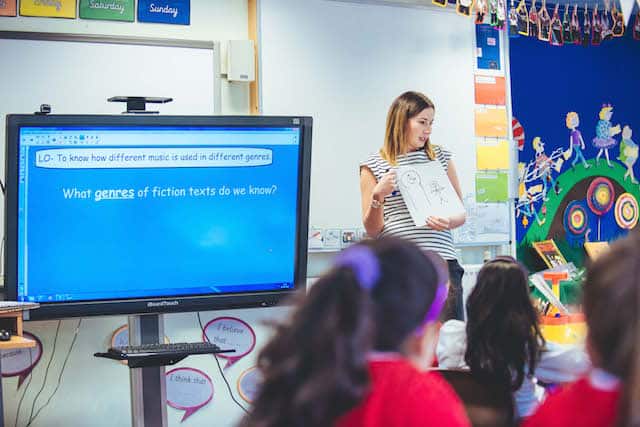Guest post: Why use film to teach literacy?
Ahead of the free online course “Teaching Literacy Through Film”, Jennifer Johnston, Programme Manager at Into Film, discusses the benefits of using film in the classroom to raise attainment.

In a world where the moving image is becoming increasingly important, educators are increasingly interested in using film as a serious learning tool.
This is a medium that is accessible to all, regardless of ability, with the power to bring to life aspects of the curriculum that some students may consider dull; portray subjects from science to Shakespeare in a different light; boost young people’s literacy, creativity and critical skills; and inspire disengaged pupils.
Film can open up a world of creative possibilities
When we use film as a text worthy of interrogation rather than perceiving it as a “treat” or a passive means of consumption, we open up a world of creative possibilities for teaching and learning.
When children interrogate film – analysing and deconstructing visual and sound elements such as setting, images, music, and how the camera is moving or its position in relation to the characters – then we really start to open up the world of literacy to our learners.
As Colm Hackett of Hazelwood Integrated College, says:
“Using film to teach literacy promotes a more democratic and inclusive method of teaching. We, as teachers, have to meet the challenge of engaging all children. As they are already a visually literate generation, this is the best way I have found to do so.”
The educational value of film
The latest, independent evidence highlighting the educational value of film comes from a team of film educators who spent the last academic year working with teachers in Leeds to show how film can be used to improve attainment and progress in reading and writing.
The Leeds Partnership Project: Improving Literacy Through Film (2014/15) recorded a number of improvements in pupils who were regularly engaged in film watching and filmmaking, including: 96% improvement in average points’ progress in reading; 60% improvement in average points’ progress in writing; and 75% improvement in attitude to learning.
The report tallies with Into Film’s own findings, in which 96% of teachers using film in class said it increases pupils’ levels of engagement; 74% said it improves their critical thinking skills; and 70% said it boosts literacy. These skills are both valuable in their own right and also associated with wider academic attainment.
Film deserves a place in every classroom
Add to this feedback suggesting that watching, discussing and reviewing films helps to develop independent thinking, broader cultural awareness, vocational aspiration, and confidence and social skills, and it seems clear that film deserves a place in every classroom.
Want to know more? Join the free online course “Teaching Literacy Through Film” from the British Film Institute (BFI) and Into Film now.




